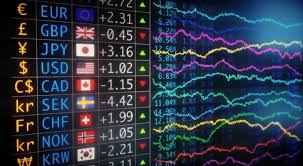
Mastering Forex Trading Techniques: Strategies for Success
In the dynamic world of forex trading, understanding and mastering effective trading techniques is essential for success. Aspiring traders often find themselves overwhelmed by the vast amount of information available, which is why this article aims to provide a structured overview of the most effective forex trading strategies and techniques. Whether you are a beginner or an experienced trader, there’s always something new to learn. For the best brokers to kickstart your trading journey, check out forex trading techniques Best Ivorian Brokers.
Understanding Forex Market Basics
The forex market is a global decentralized marketplace for trading international currencies. It operates 24 hours a day, five days a week, accommodating traders from various time zones. The main objective of forex trading is to profit from changes in currency values. Traders can either buy (long) or sell (short) currencies based on their predictions of market movement.
Fundamental Analysis
Fundamental analysis involves evaluating economic indicators and news events that can influence currency values. Factors such as interest rates, inflation, unemployment rates, and GDP growth are crucial in determining currency strength. Successful traders must stay updated with relevant news and economic forecasts to make informed decisions. Key indicators to monitor include:
- Interest Rates: Central banks control interest rates, which affect currency valuation. For example, a rise in interest rates often strengthens a currency as it attracts more foreign capital.
- Economic Indicators: Reports on GDP growth, employment, manufacturing output, and consumer spending provide insight into the economic health of a country.
- Political Events: Elections, trade negotiations, and geopolitical tensions can lead to significant volatility in the forex market.
Technical Analysis
Technical analysis focuses on historical price movements and trading volumes to predict future currency price movements. This method is based on the belief that market trends, when established, will continue. Traders use various tools and techniques to analyze price charts, including:

- Chart Patterns: Recognizing patterns, such as head and shoulders, flags, and double tops/bottoms, can provide indications of potential reversals or continuations in price trends.
- Indicators: Tools like moving averages, Relative Strength Index (RSI), and Bollinger Bands can help to identify trends and potential entry/exit points.
- Support and Resistance Levels: Identifying key price levels where currency pairs have historically reversed can inform trading decisions.
Risk Management Techniques
Regardless of trading style or technique, effective risk management is vital in forex trading. Here are some essential strategies to protect your capital:
- Set a Risk-to-Reward Ratio: Aim for a minimum risk-to-reward ratio of 1:2, meaning you should aim to gain at least double what you are willing to risk on a trade.
- Use Stop-Loss Orders: To limit potential losses, set stop-loss orders that automatically close a trade if it reaches a certain price.
- Diversify Your Portfolio: Instead of putting all your funds into one currency pair, diversify your trades across different pairs to spread risk.
Scalping
Scalping is a popular trading technique involving making numerous trades over short periods to achieve small profit margins. Scalpers need to be quick and efficient in identifying and executing trades, often holding positions for only a few minutes. Key considerations for scalping include:
- High Market Liquidity: Choose currency pairs with high trading volumes to ensure you can enter and exit trades quickly.
- Minimal Slippage: During fast market movements, slippage can eat into profits. Select a broker that offers low latency and minimal slippage.
- Real-Time Data: Utilize real-time charts and news feeds to react swiftly to market changes.
Day Trading
Day trading involves opening and closing positions within a single trading day, avoiding overnight exposure to market risk. Day traders stick to a specific set of trading hours and employ various strategies, including:

- News Trading: Making trades based on impending news releases to capitalize on potential volatility.
- Trend Following: Identifying and trading in the direction of established market trends.
- Range Trading: Taking advantage of price oscillations within defined support and resistance levels.
Position Trading
Position trading takes a long-term view, with trades typically held for weeks, months, or even years. This strategy relies heavily on fundamental analysis, and traders focus on major economic trends rather than short-term price fluctuations. The advantages of position trading include:
- Less Stress: Fewer trades result in lower stress levels compared to day trading or scalping.
- Focus on Bigger Moves: Position traders aim for significant price movements, potentially leading to larger profits.
- Utilizing Leverage: Depending on the broker, position traders can utilize leverage to amplify their returns.
Algorithmic Trading
Algorithmic trading refers to using automated systems or algorithms to execute trades based on pre-defined criteria. These systems can monitor multiple markets and execute trades at speeds unimaginable for human traders. Benefits of algorithmic trading include:
- Eliminating Emotion: Automated strategies remove emotional decision-making from trading.
- Speed and Efficiency: Algorithms can rapidly analyze data and execute trades in milliseconds.
- Backtesting: Traders can test their strategies using historical data before deploying them in live markets.
Conclusion
Forex trading offers incredible opportunities for profit, but success requires a solid understanding of various trading techniques and risk management practices. By integrating a combination of fundamental and technical analysis, along with disciplined risk management, traders can navigate the complexities of the forex market. Remember that every trader has a unique style that works best for them, so it’s essential to continually educate yourself and adapt your strategies as you gain experience. Whether you choose scalping, day trading, or a more long-term approach, consistency, and discipline are key to thriving in the forex markets.
